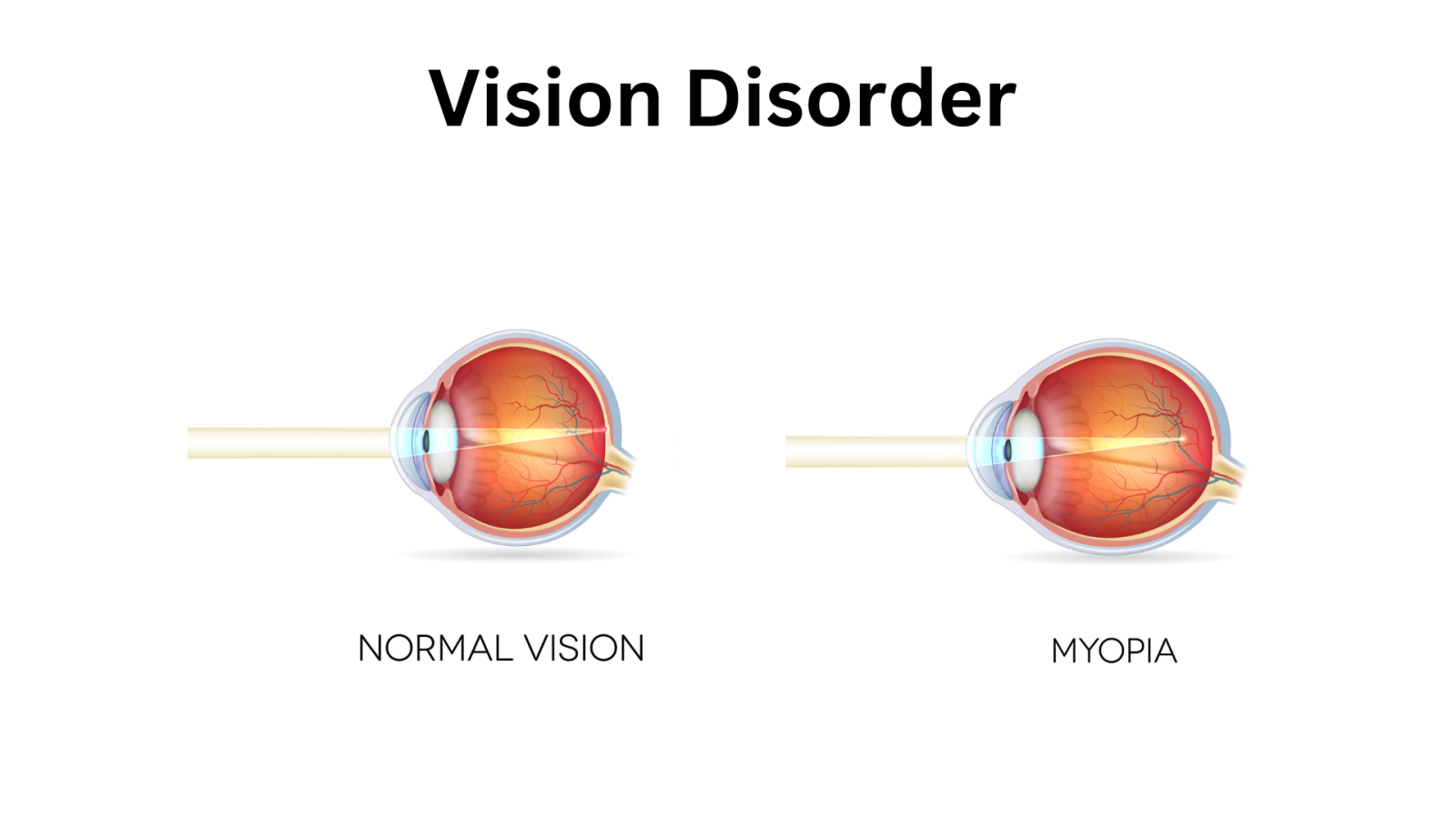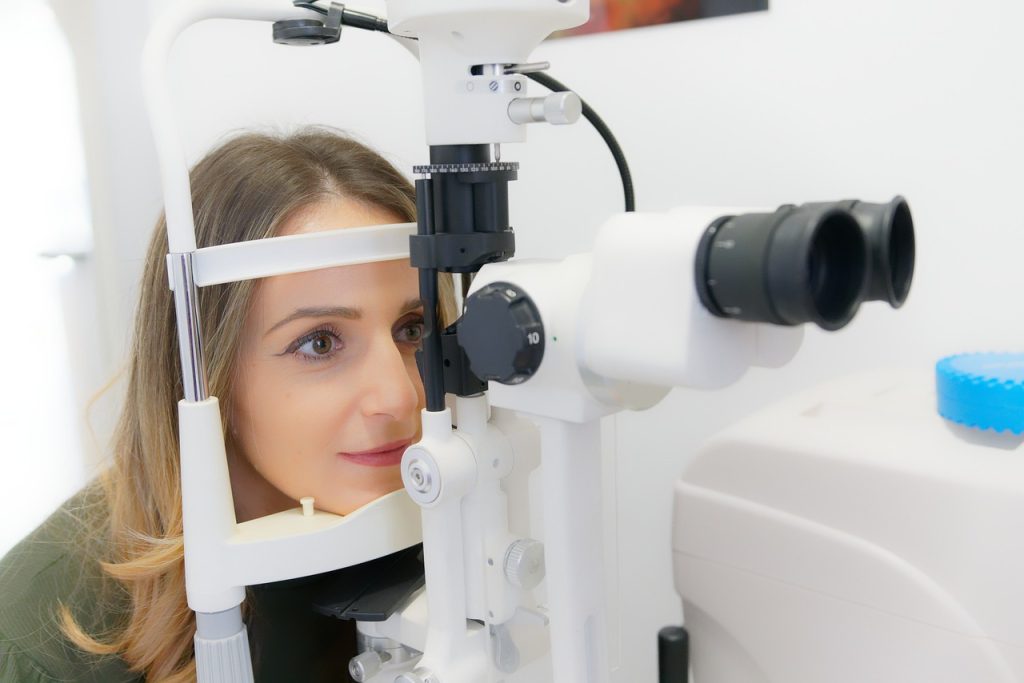What is Myopia (Nearsightedness)?
Myopia, also referred to as nearsightedness, is a refractive error where light entering the eye focuses incorrectly in front of the retina instead of directly on it. This inability to refract light properly causes difficulty seeing far away.
In the United States alone over 125 million people need vision correction due to myopia. While hereditary factors play a role, close work and environmental aspects may encourage progression.

What Causes Myopia?
Common root causes of myopia include:
- Genetics – Hereditary factors make some more predisposed
- Excessive near work – Reading, computer use can encourage development
- False myopia – Temporary blur from overusing eyes’ focusing ability

Prolonged activities requiring visual concentration up close may also contribute to true myopia worsening over time if already present.
The culprit behind blurred vision lies in the eye’s anatomy. In an ideal scenario, the cornea (the clear, dome-shaped front surface) and lens work together to focus incoming light rays precisely onto the retina, the light-sensitive layer at the back of the eye. In myopic individuals, the eyeball is either elongated, or the cornea is excessively curved. This disrupts the light’s focusing point, causing distant objects to appear blurry.
Recognizing the Signs and Symptoms of Myopia
Early detection and intervention are crucial for managing myopia effectively. Here are some telltale signs that you or your child might be nearsighted:
- Difficulty seeing objects far away, particularly at night.
- Squinting to see clearly.
- Headaches or eye strain after near work activities.
- Holding objects closer than usual for better visibility.
- Difficulty seeing the board clearly in school.
If you experience any of these symptoms, scheduling a comprehensive eye exam with a qualified ophthalmologist is vital. A thorough examination will confirm the presence of myopia and determine its severity.
Diagnostic Techniques for Myopia
A comprehensive eye exam is the cornerstone of diagnosing myopia. The ophthalmologist will employ various techniques to assess your vision and eye health. These may include:
- Visual acuity test: This chart-based test measures your ability to see objects at different distances, pinpointing the degree of nearsightedness.
- Retinoscopy: This painless procedure utilizes a light instrument to assess how light reflects off the retina, helping determine the refractive error (focusing issue) in the eye.
- Autorefraction: This automated test provides a preliminary assessment of refractive errors, similar to retinoscopy.
- Ophthalmoscopy: The ophthalmologist examines the internal structures of the eye, including the retina, to ensure overall eye health.
Following the examination, your ophthalmologist will discuss the diagnosis and recommend the most suitable treatment plan based on your specific needs and the severity of your myopia.
Diagnosing and Treating Myopia:
If struggling with distant blur, eye strain, squinting, or headaches after near tasks, scheduling an exam can identify myopia through refraction testing, retinal evaluation and more. Correction then ranges from glasses to contact lenses or laser eye procedures like LASIK reshaping the cornea to enable clear sight.
- Eyeglasses and Contact Lenses: The most widely used correction method, eyeglasses or contact lenses, utilize corrective lenses to bend light rays and focus them precisely on the retina, restoring clear vision.
- LASIK Surgery: This laser vision correction procedure reshapes the cornea using a laser to improve the eye’s focusing ability. LASIK is a popular option for individuals seeking a permanent solution to myopia.
- PRK (Photorefractive Keratectomy): Similar to LASIK, PRK utilizes a laser to reshape the cornea. However, it doesn’t involve creating a corneal flap, making it suitable for patients with certain corneal irregularities.
The choice of treatment depends on individual factors like age, severity of myopia, lifestyle preferences, and corneal health. Consulting with your ophthalmologist is important to determine the most appropriate treatment for your specific situation.

Embracing Clear Vision with Myopia Management
Myopia, while a prevalent vision concern, need not limit your ability to experience the world in sharp focus. Through early detection, proper diagnosis, and a variety of effective treatment options available, you can achieve clear vision and optimal eye health. Here are some additional tips for myopia management:
- Schedule regular eye exams: Regular eye checkups allow your ophthalmologist to monitor the progression of myopia and adjust your treatment plan as needed.
- Maintain good posture: Proper posture, particularly while reading or using electronic devices, helps reduce eye strain.
- Take breaks from near work: Give your eyes a break from close-up activities by practicing the 20-20-20 rule: every 20 minutes, look at something 20 feet away for 20 seconds.
- Spend time outdoors: Studies suggest spending time outdoors, particularly in natural light, may help reduce the risk of myopia progression in children.
- Maintain a healthy diet: A balanced diet rich in essential nutrients like lutein and zeaxanthin, found in green leafy vegetables, may promote overall eye health.
By incorporating these practices alongside your chosen treatment plan, you can effectively manage myopia and enjoy clear vision for a lifetime. Remember, knowledge empowers you to take charge of your eye health. If you have any concerns about nearsightedness, don’t hesitate to consult your ophthalmologist.

